Saudi Arabia is embarking on a colossal mission to host the 2034 FIFA World Cup, featuring fifteen international-standard stadiums spread across five major cities. Riyadh, Jeddah, Khobar, Abha, and Neom
Stadium Distribution & Development Overview
- Riyadh will host eight stadiums, including four existing venues undergoing redevelopment and four new builds.
- Jeddah is set to feature four stadiums, one of which is existing and three are new.
- Khobar, Abha, and Neom will each host one stadium
Spotlight Stadiums & Highlights
1. King Salman International Stadium (Riyadh)
- Capacity: 92,760 — the largest in the Kingdom, slated for both the opening match and the final
- Completion: Q4 2029; construction begins in 2025
- Inspired by local landscape, it integrates with the Green Riyadh Project and features luxury suites, eco-design, and seamless transit access
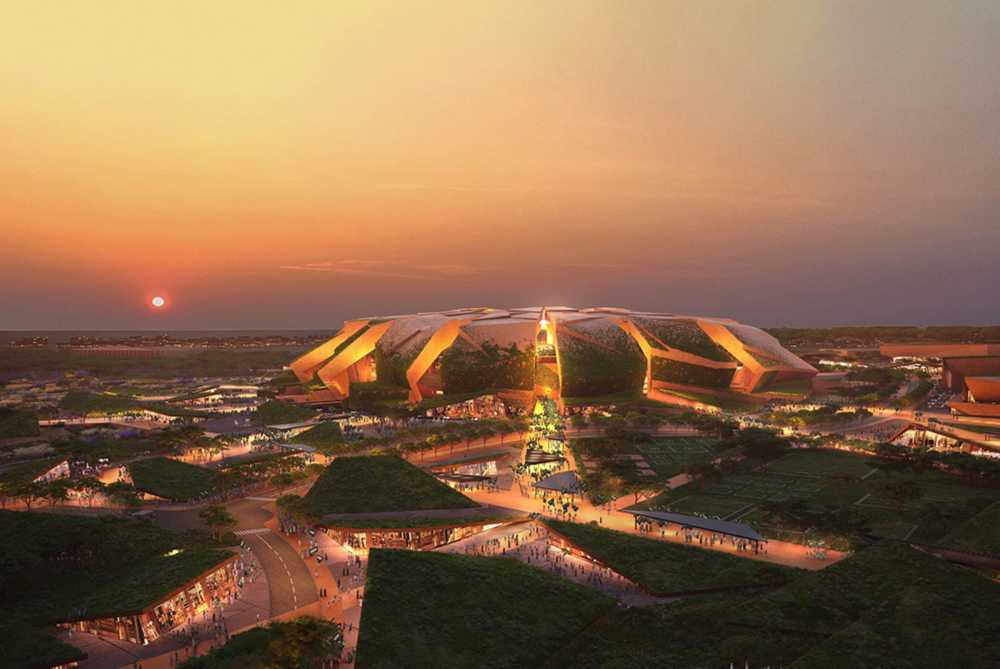
2. King Fahad Sports City Stadium (Riyadh)
- Renovation Target: Boost capacity to ~70,200 by 2026.
- Design draws from traditional Bedouin tents; multi-purpose venue for both sports and cultural events
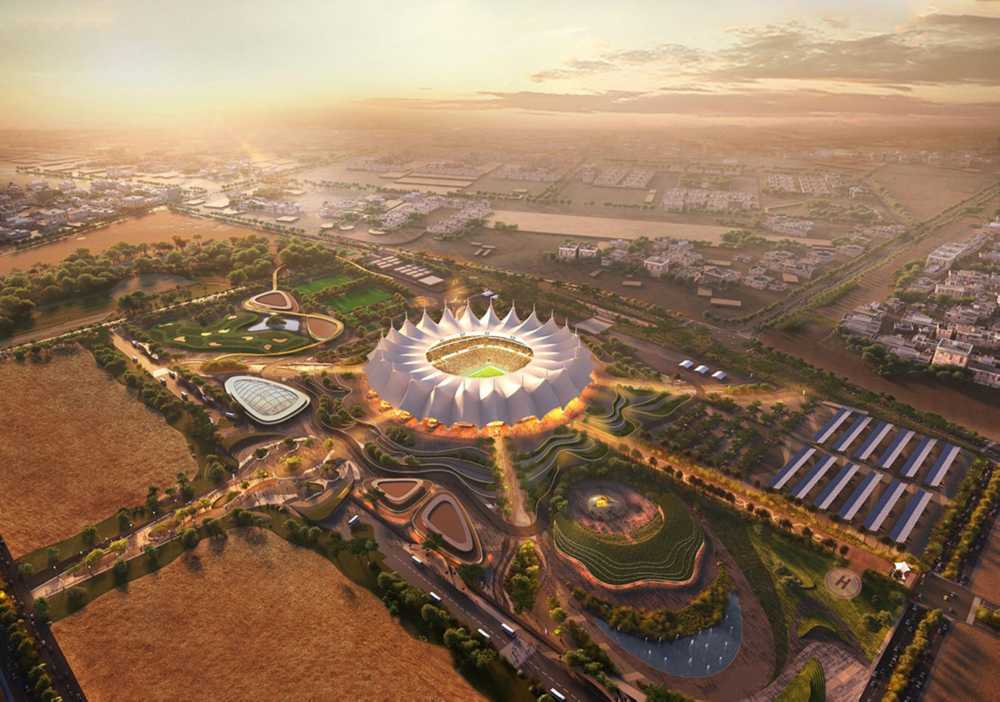
3. Prince Mohammed bin Salman Stadium (Riyadh, Qiddiya)
- Capacity: ~46,979; slated for completion in 2029.
- Unique clifftop setting with fully retractable roof, pitch, and LED wall
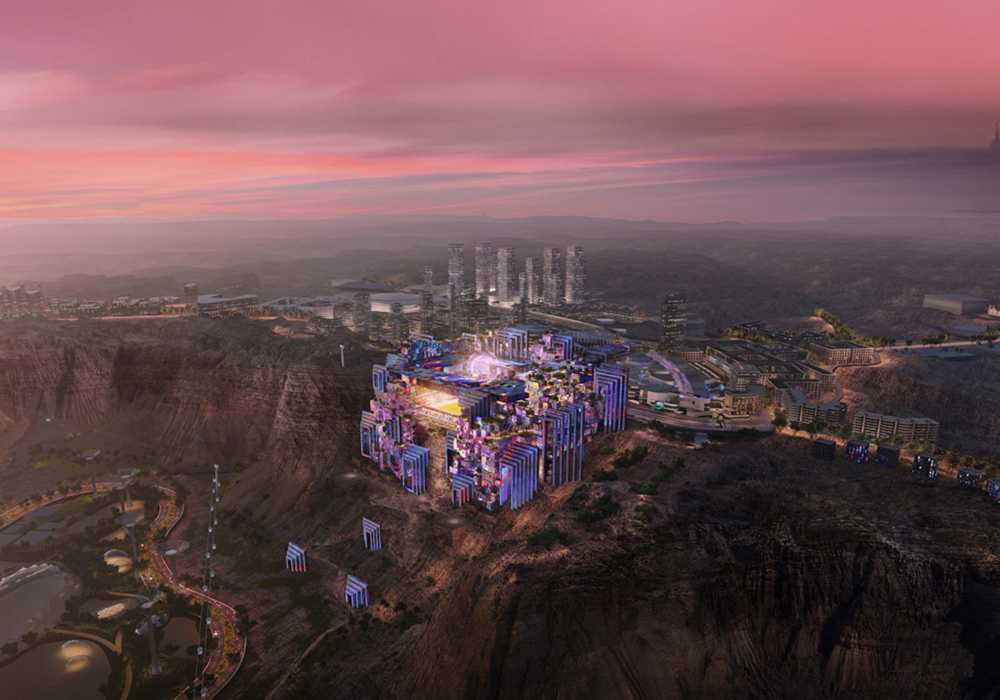
4. New Murabba Stadium (Riyadh)
- Capacity: ~46,010; opening expected by 2032
- Design inspired by the native Acacia tree’s bark, part of Riyadh’s transformative downtown New Murabba district
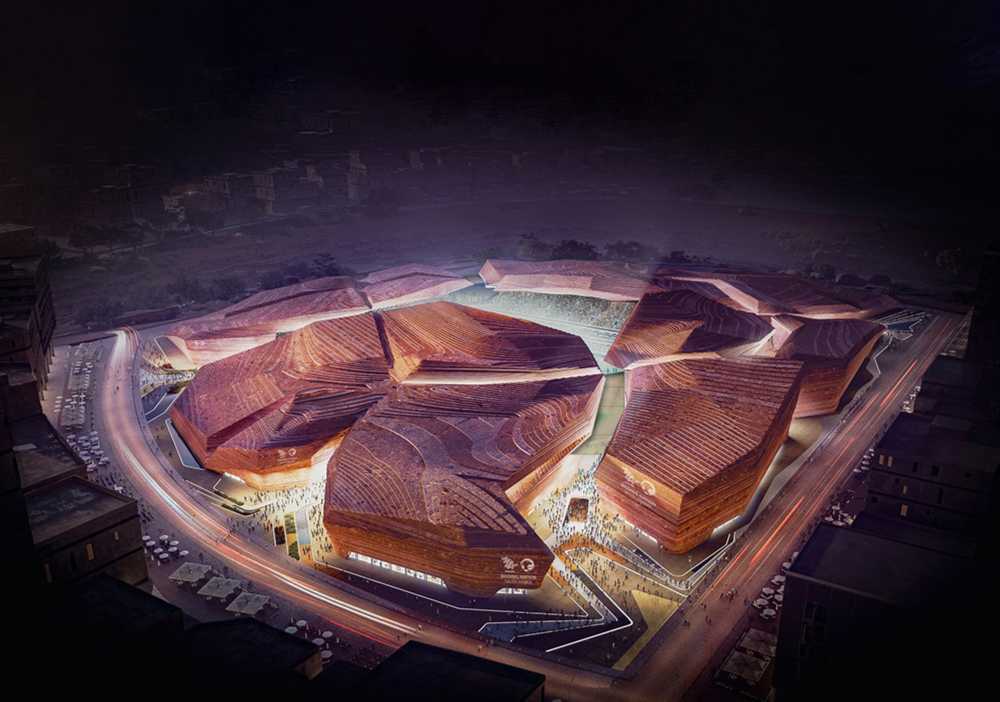
5. ROSHN Stadium (Riyadh)
- Capacity: ~46,000; completion by 2032
- Crystalline façade, dynamic urban architecture glowing at night with integrated hospitality spaces
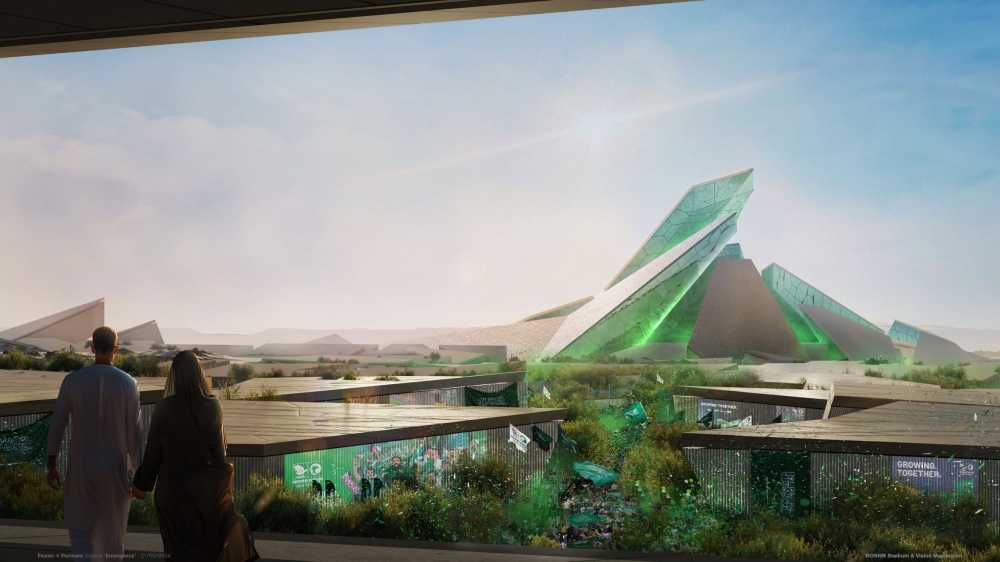
6. Prince Faisal bin Fahd Sports City Stadium (Riyadh)
- Current renovation increases capacity to ~46,865, with completion set for 2027.
- Emphasizes community-based design and green space integration
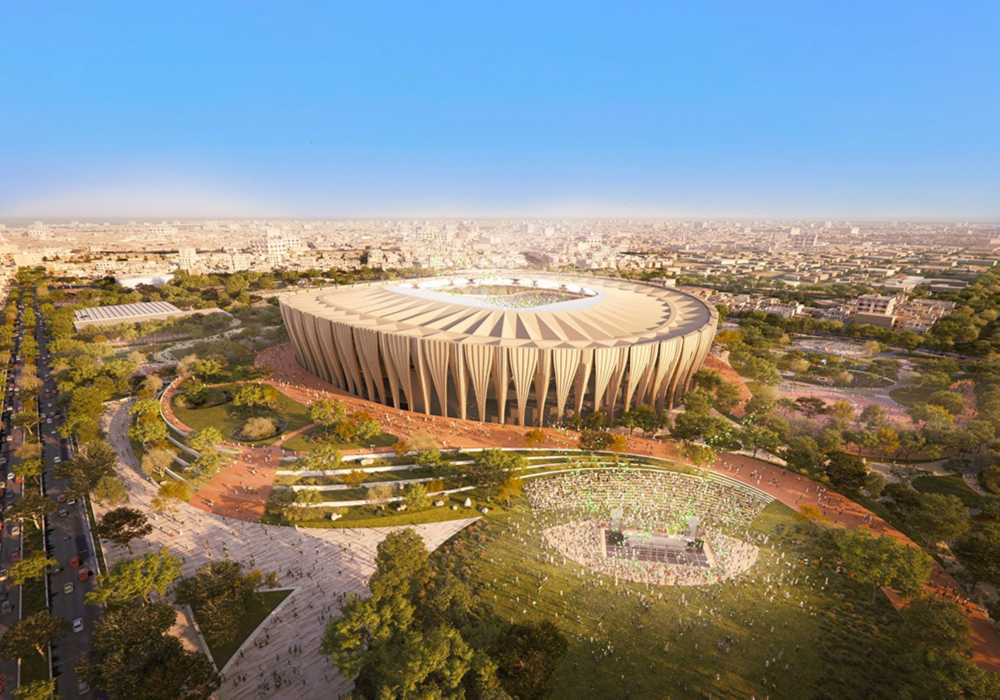
7. South Riyadh Stadium
- Projected capacity: ~47,060; completion anticipated in 2032.
- Reflects Salmani architecture — blending tradition with modern design
Key Stadiums Outside Riyadh:
Jeddah
- King Abdullah Sports City Stadium (“The Shining Jewel”): Renovated existing venue (~58,432 capacity) meets FIFA standards
- Qiddiya Coast Stadium: ~46,096 capacity; seaside build with a “Mexican wave” aesthetic
- Jeddah Central Development Stadium: ~45,794 capacity; inspired by historic Al-Balad architecture and surrounded by community amenities
- King Abdullah Economic City Stadium: ~45,700 capacity; coastal design inspired by coral reefs; multi-purpose usage
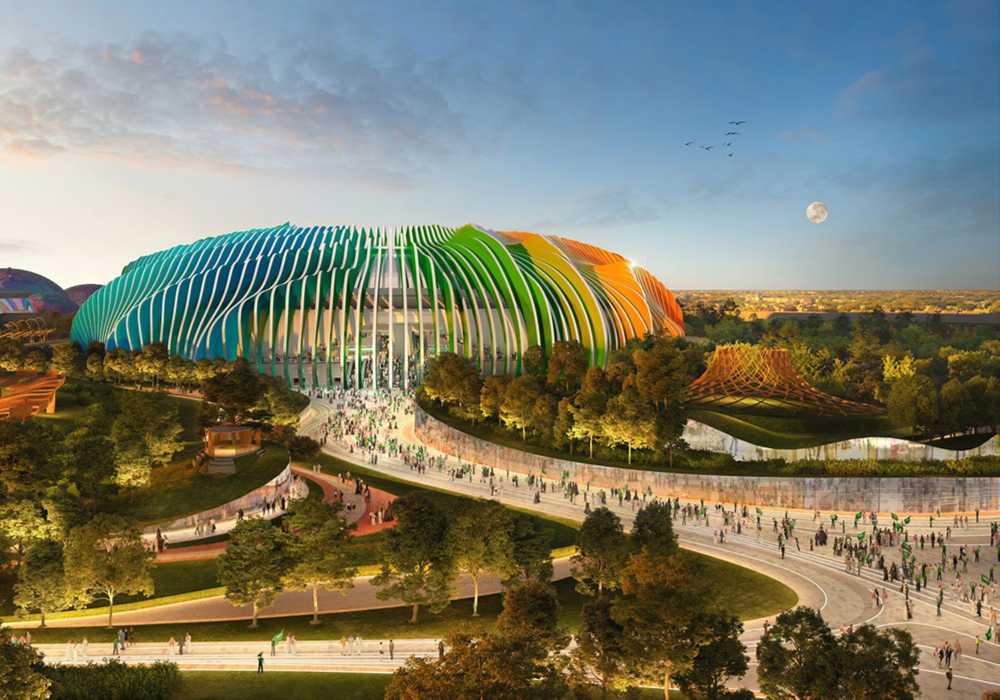
Al Khobar
- Aramco Stadium: ~46,096 capacity; wave-inspired design reflecting the nearby Gulf
- To be completed by 2026, post-World Cup will house Al-Qadsiah club and retail amenities
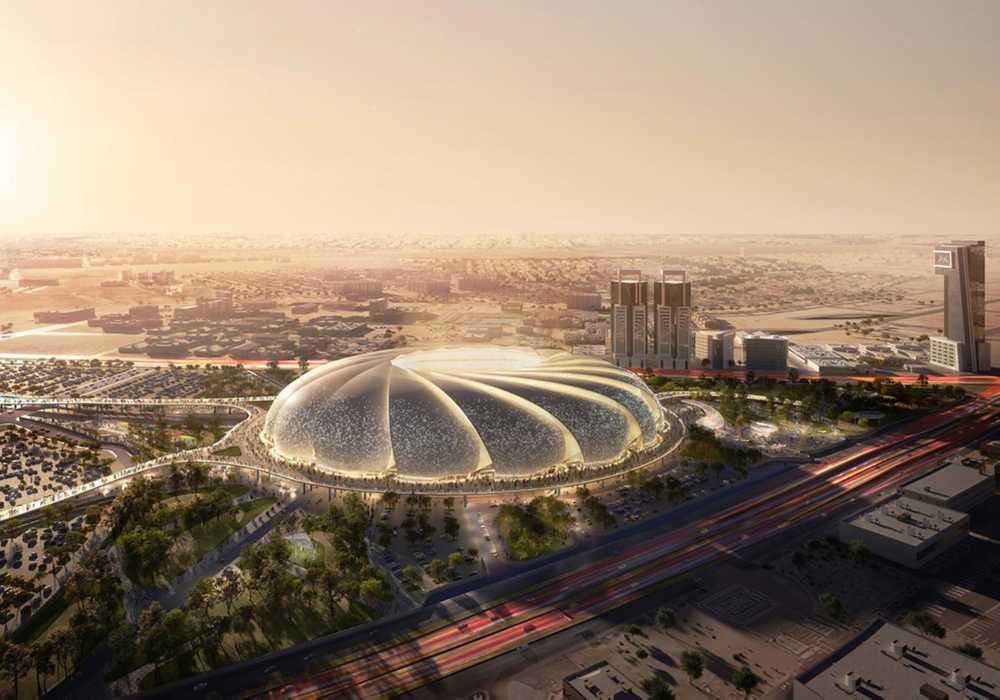
Abha
- King Khalid University Stadium: Expansion from ~22,000 to ~45,428; upgrades by 2032 while preserving local heritage
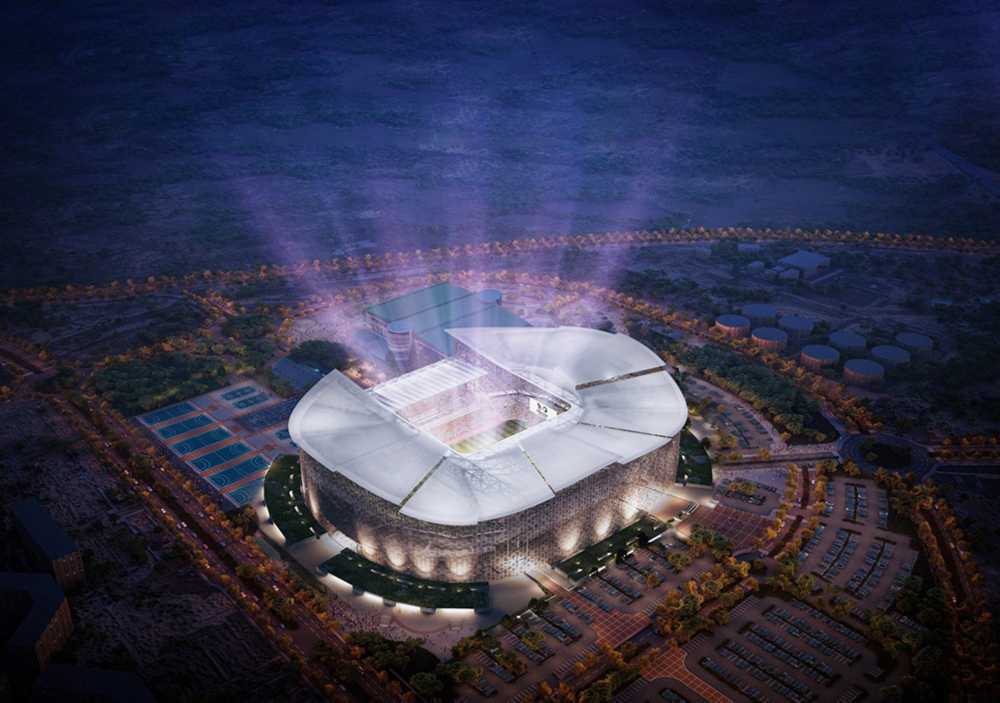
Neom
- Neom Stadium: ~46,010 capacity; dramatically perched 350m above ground within The Line; sustainable, ultra-modern design
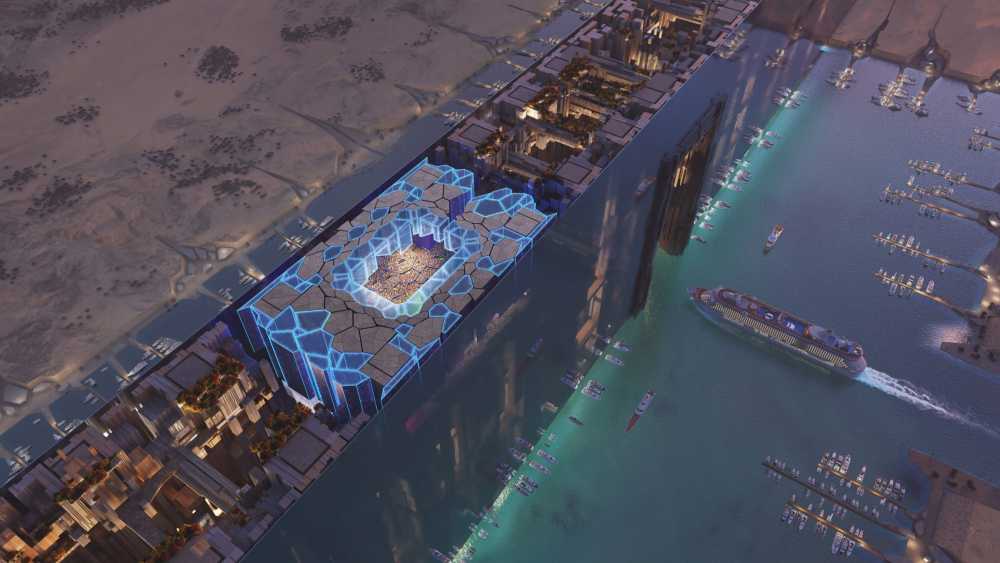
Context & Considerations
Saudi Arabia’s ambitious plan aligns with Vision 2030, aiming to transform its global sports image while boosting tourism and infrastructure. However, critics warn of the environmental impact, citing increased emissions from large-scale construction and challenges seen in previous mega-events.
| City | Stadium | Capacity | Timeline |
|---|---|---|---|
| Riyadh | King Salman Intl. | 92,760 | 2029 |
| King Fahad Sports City | 70,200 | 2026 | |
| Prince Mohammed bin Salman | ~46,979 | 2029 | |
| New Murabba | ~46,010 | 2032 | |
| ROSHN Stadium | ~46,000 | 2032 | |
| Prince Faisal bin Fahd | ~46,865 | 2027 | |
| South Riyadh | ~47,060 | 2032 | |
| King Saud University | ~46,319 | 2032 | |
| Jeddah | King Abdullah Sports City | ~58,432 | Converted |
| Qiddiya Coast | ~46,096 | 2032 | |
| Jeddah Central Development | ~45,794 | 2027 | |
| KAEC Stadium | ~45,700 | 2032 | |
| Khobar | Aramco Stadium | ~46,096 | 2026 |
| Abha | King Khalid University | ~45,428 | 2032 |
| Neom | Neom Stadium | ~46,010 | 2032 |
Closing Thoughts
Saudi Arabia’s preparation for the 2034 FIFA World Cup transcends football It is a bold showcase of architectural innovation, cultural symbolism, and urban transformation. From ground-breaking fields perched on cliffs to crystal-like stadiums illuminated at night, each venue reflects a future-facing vision. Though not without scrutiny on sustainability.
Notes: Stadium render and reference images courtesy of saudipedia.com.


